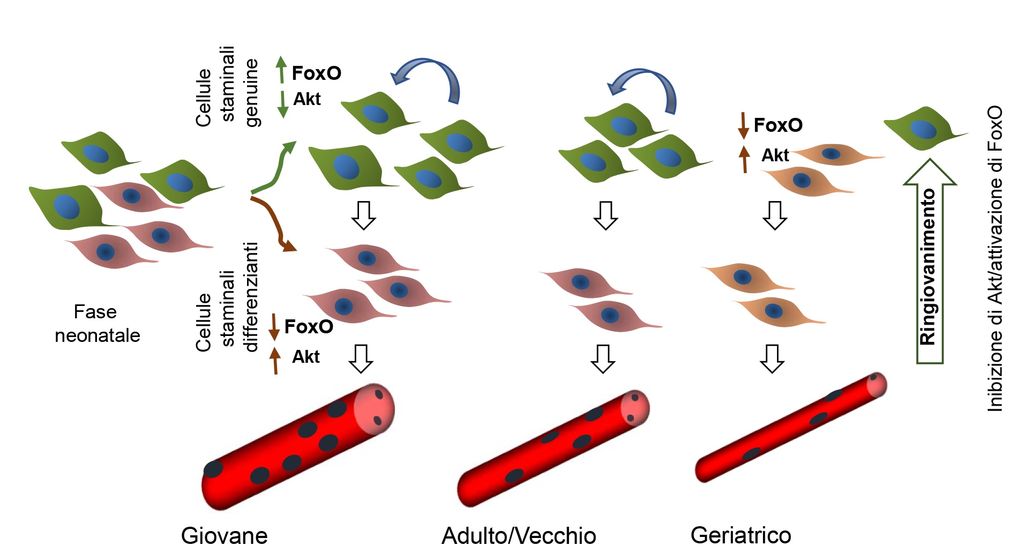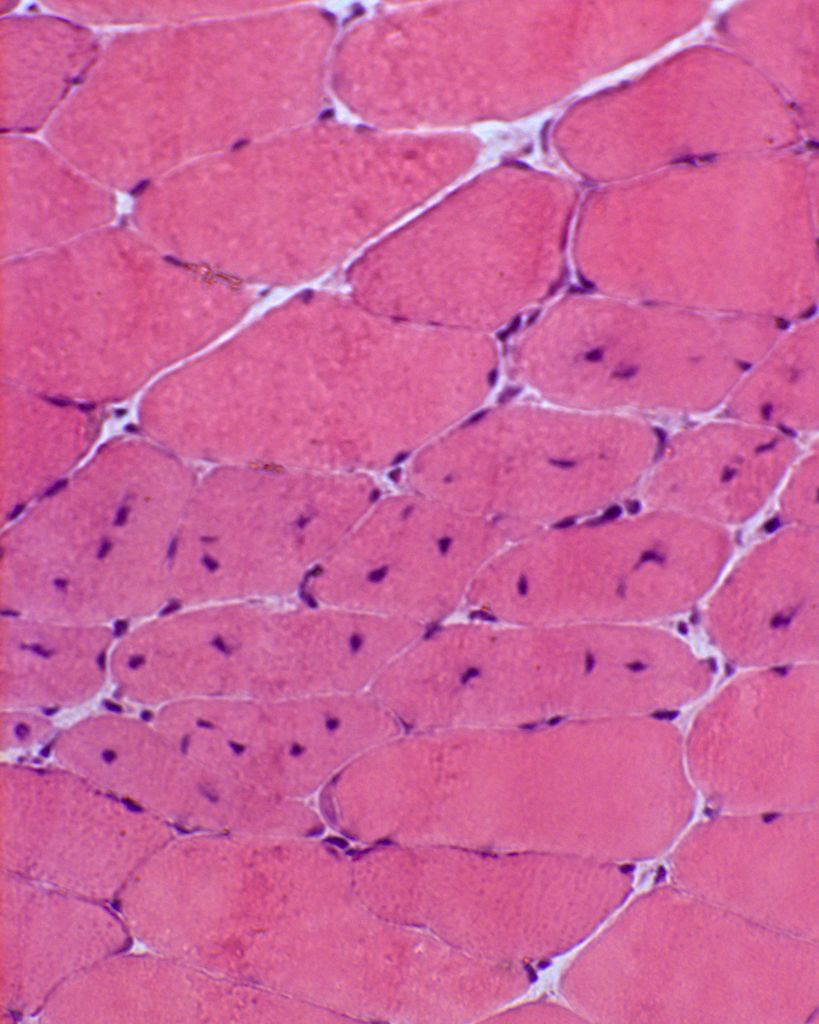
The second youth of muscles
With advancing age, muscles tend to lose part of their mass, and therefore their strength, as well as their ability to repair and regenerate after trauma or damage. This increases the risk of loss of autonomy and greater fragility in older people.
A new international study, coordinated by the Pompeu Fabra University of Barcelona with the participation of numerous laboratories, including that of Antonio Musarò's group at the Sapienza University of Rome, and published on the journal Nature Cell Biology, has made it possible to identify the potential mechanism that could keep muscle stem cells in older individuals young. The mechanism is a transcription factor, FoxO, which regulates gene expression, that series of events that translate the information contained in a gene and lead to the formation of a protein.
The study showed that experimental drugs that activate FoxO can rejuvenate and restore the function of geriatric stem cells, allowing an old muscle to activate regenerative processes that are typical of a young muscle.
The outcomes of the study suggest that the stem cells in the muscles do not all age in the same way and that there is a subgroup that can maintain the ability to regenerate even in geriatric individuals. As a result of trauma or the different conditions in which a muscle is damaged and in need of repair, regeneration of skeletal muscle takes place thanks to a population of stem cells, called satellite cells, which are normally in a dormant state.
"Among the elderly − says Antonio Musarò of the Department of Anatomical Histological Medical Legal Sciences and Locomotor Apparatus of Sapienza − this factor tends to function less in this subgroup of stem cells, the satellite cells, causing a loss in their regenerative capacity."
The reduced functionality of these satellite cells with advancing age leads to a decrease in the muscle's ability to repair the damage or remain active. The mechanisms, cellular and molecular, underlying this regenerative dysfunction of an old muscle have not been fully clarified until now. The knowledge now gained on the FoxO factor, although currently the study has only been experimented on animals, paves the way for possible approaches to improve the health of elderly people debilitated by loss of muscle mass or patients suffering from neuromuscular diseases.
References:
FoxO maintains a genuine muscle stem-cell quiescent state until geriatric age − Laura García-Prat, Eusebio Perdiguero, Sonia Alonso-Martín, Stefania Dell’Orso, Srikanth Ravichandran, Stephen R. Brooks, Aster H. Juan, Silvia Campanario, Kan Jiang, Xiaotong Hong, Laura Ortet, Vanessa Ruiz-Bonilla, Marta Flández, Victoria Moiseeva, Elena Rebollo, Mercè Jardí, Hong-Wei Sun, Antonio Musarò, Marco Sandri, Antonio del Sol, Vittorio Sartorelli & Pura Muñoz-Cánoves − Nature Cell Biology, 2020. DOI https://doi.org/10.1038/s41556-020-00593-7
Further Information
Antonio Musarò
Department of Anatomical Histological Medical Legal Sciences and Locomotor Apparatus
antonio.musaro@uniroma1.it



